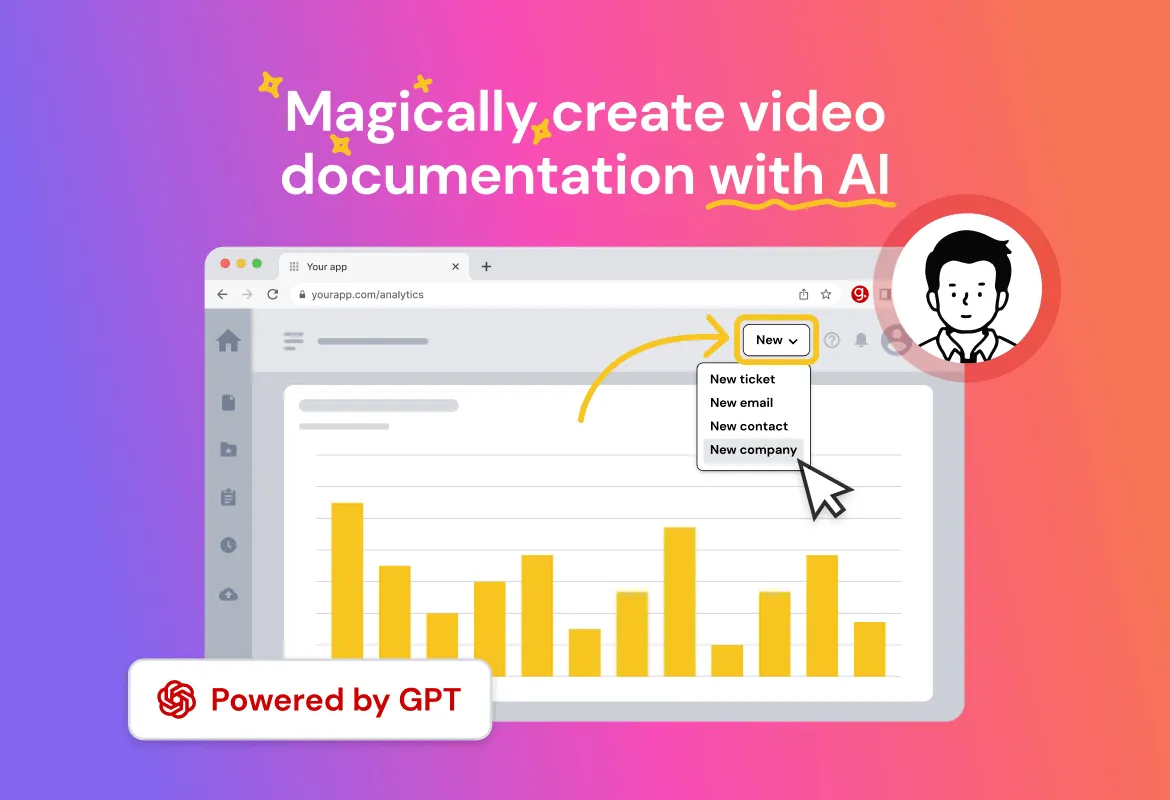Closed Captioning vs. Open Captioning: Which is Right for You
From classrooms to airports, closed and open captions bridge the gap. Discover how they empower diverse audiences.
Published February 18, 2024.

Ever miss critical details in a busy meeting due to muffled audio or background noise? Closed and open captions can be the solution to your frustration. They improve accessibility, focus, and help you retain what you've learned.
So, let's explore how you can use captions to ensure everyone understands key points in meetings, presentations, and training materials—leading your company toward better decision-making and teamwork.
Why Is Captioning Important?
While captions are essential for deaf and hard-of-hearing individuals, their benefits extend far beyond. Other people also rely on them to understand the content better.
Here are some common reasons why they're valuable:
- Captions help everyone stay focused and grasp information better, especially in noisy environments or during complex lectures.
- They help you understand foreign language content or videos with unclear audio.
- Visual learners often find them helpful, as they reinforce spoken information and help you memorize the content.
- In crowded spaces or when sound isn't ideal, they help you discreetly follow the content without disturbing others.
» Learn to create visual answers for your chatbots
What Are Closed Captions?
You can imagine closed captions as subtitles you can turn on or off, often through settings on your device. This flexibility benefits people with hearing impairments who may rely on them to understand the audio while leaving others who don't need them to enjoy the content without distraction.
What Are Open Captions?
On the other hand, open captions are permanent subtitles burned into the clip itself. They're always displayed, and you can't turn them off. While they make the video accessible for those who need it, they can distract some viewers.
Closed vs. Open Captions: Understanding the Trade-Offs
While both closed and open captions are helpful for those with hearing impairments, their advantages extend beyond accessibility alone.
Closed captions offer distinct benefits:
- Viewers can turn them on or off, catering to individual preferences and situations.
- You can enjoy content without disturbing others in quiet environments.
- They improve understanding in noisy settings or complex presentations.
Open captions also have valuable features:
- They provide consistent access to information without user intervention.
- You can use them for stylistic purposes or to emphasize specific dialogue.
- Open captions benefit non-native speakers or viewers unfamiliar with accents.
Note: For better accessibility and understanding, add captions to your product how-to videos using tools like guidde. It'll help your viewers follow along even in quiet environments or when audio isn't accessible.
Who Needs Captions? Catering to Diverse Audiences
Working in an academic environment, I've seen how captions help students. They ensure everyone can access lecture content, regardless of hearing ability or background noise. Captions go beyond classrooms, though. Online learning platforms often use them. Plus, dedicated individuals sometimes do them live for YouTube videos.
While my experience lies in education settings, captions hold benefits across various platforms:
- Foreign language learning: Captions in a different language aid comprehension and vocabulary acquisition.
- Noisy environments: Captions combat distractions in loud places like airports or crowded cafes.
- Focus and retention: Visual learners—those with ADHD—or anyone seeking extra clarity can benefit from captions.
- Privacy and convenience: Enjoy content discreetly in public spaces without disturbing others.
» Check out the best audio-to-text AI tools and transcribe your meetings
Closed vs. Open: Choosing the Right Caption for the Job
Convenience and privacy are critical factors when choosing between closed and open captions. Some people feel uncomfortable having everyone know they use them. Ideally, you could offer the option to turn them on or off.
On the other hand, some people prefer watching the visuals to reading subtitles, especially in movie theaters. But, at home on personal devices like computers or tablets, having optional captions provides flexibility.
» Try using video in sales to improve buy-ins and conversions
Reach Your Audience Effectively
Ultimately, the choice between closed and open captions comes down to individual preferences and context. Both options offer valuable benefits, and understanding their strengths and limitations can help you make informed decisions.
If you're still struggling to keep up in online meetings due to muffled audio or background noise, guidde can automatically transcribe and add clear captions to your recordings using AI, which ensures everyone grasps key points and participates effectively.


